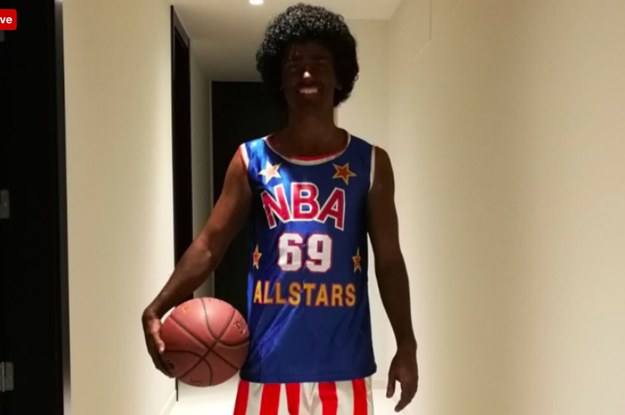Chances are if you’re a basketball fan—or even just a human being with an Internet connection—you know by now that Donald Sterling is a racist. Late last week news broke that the Los Angeles Clippers owner and billionaire real estate mogul could be heard on tape deriding his half-black, half-Mexican girlfriend V. Stiviano for associating with African-Americans. It was fine with Sterling if Stiviano wanted to sleep with a black guy, she just couldn’t invite Magic Johnson to a Clips game, and she sure as hell couldn’t post a picture with the 5x NBA champion on Instagram. The logic of bigots is, as always, ironclad.
/cdn.vox-cdn.com/uploads/chorus_image/image/71805315/1244303456.0.jpg)
While the NBA is often seen as fairly progressive when it comes to issues of equality (receiving an A+ rating in racial hiring practices from the Institute of Diversity and Ethics in Sport for 2013), in a league where the vast majority of the players are African-American and a large portion of front office management remains white, racism and misunderstanding are bound to rear their ugly heads from time to time, if only in more subtle ways that can be described as implicit or systematical as opposed to explicit, flat-out hatred.
This general division has the potential to harvest a culture that breeds canyons of misunderstanding, unenlightenment, and at times straight-up bigotry like that exhibited by Donald Sterling. We’re not assigning blame at all or giving him an out whatsoever, but in the infamous leaked audio tapes, Sterling kept referring to a culture that he was a part of and that his girlfriend didn’t understand. Whether this was supposed to refer to his gated country club, high-flying executive inner circle, the National Basketball League, or just the disillusions of a hateful man, perpetuating a system that is largely non-integrated by race or class will lead to ignorance between individuals, hierarchical rungs, and entire cultures.

Enter: the NBA dress code.
Implemented in October of 2005 by former commissioner David Stern, the NBA dress code was meant to distance the league from its then “thuggish” (and we all know what that really means) image in the mainstream. The rule made it mandatory for players to wear a jacket and tie before games, after games, during interviews, on the bench while injured, and in attendance at league charity events. Though some might assume that superstars today like Lebron James, Kevin Durant, and Russell Westbrook choose to dress sharp and take style risks within the dressier sector of menswear, the reality is that players can still be fined thousands of dollars for straying beyond the constraints mandated by the league.
/cdn.vox-cdn.com/uploads/chorus_asset/file/13212295/1037423132.jpg.jpg)
While the rule drew criticism from certain players and fans at the time—condemning Stern and the league for once again blindly associating hip-hop style with crime and thugdom—it seems to have faded from the public consciousness in recent years and simply become another part of the game (and not nearly as offensive and wrong as Sterling’s words). So here, as a “fuck you” to the oft-forgotten rule that sought to weed out the “thuggery” that, according to the NBA, goes hand-in-hand with streetwear and hip-hop style, are The Players Who Were Most Affected by the NBA’s Implicitly Racist Dress Code.